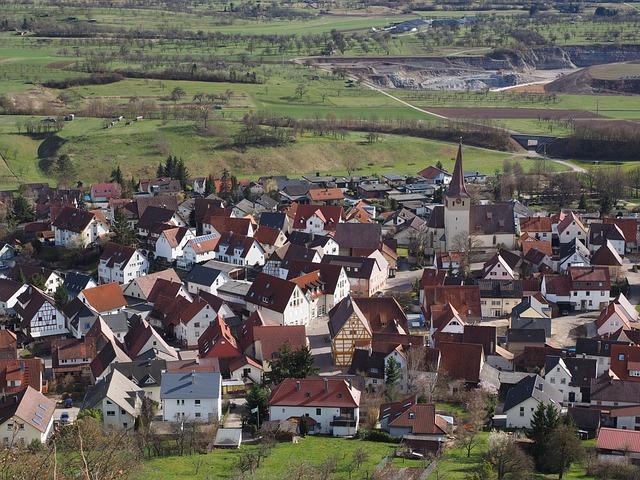Revamping Pakistan’s Infrastructure: A Path to Progress
In a world increasingly driven by connectivity and efficiency, the state of a nation’s infrastructure often serves as the backbone of its economic and social vitality. For Pakistan, a country rich in cultural heritage and natural resources, the potential for progress hinges on its commitment to revamping a system that has, over the years, struggled to keep pace with the demands of a growing population and evolving global landscape. From crumbling roads and outdated public transport to energy shortages and fragmented urban development, the challenges are significant, yet so too are the opportunities. As Pakistan navigates the complexities of modernization and seeks to elevate its citizens’ quality of life, a strategic overhaul of its infrastructure emerges as a beacon of hope. This article delves into the multifaceted realm of infrastructure revitalization, exploring innovative solutions, potential benefits, and the vital role it plays in paving a sustainable path toward progress for Pakistan and its people.
Envisioning a Sustainable Framework for Urban Development
- Green Infrastructure: Integrating parks, green roofs, and urban forests to improve air quality.
- Smart Technology: Utilizing IoT (Internet of Things) solutions to enhance traffic management and reduce energy consumption.
- Community Participation: Engaging local citizens in decision-making processes to ensure projects meet their needs.
| Transport Type | Benefits |
|---|---|
| Electric Buses | Reduce emissions and noise pollution |
| Cycling Lanes | Promote health and reduce traffic congestion |
| Subway Systems | Increase efficiency and decrease travel time |
By implementing these strategies, Pakistan can establish a modern infrastructure that not only meets the demands of today but also protects the environment for generations to come.

Enhancing Connectivity through Smart Transportation Solutions
In the quest for a more streamlined future, the integration of smart transportation solutions is pivotal for enhancing connectivity across Pakistan. Leveraging cutting-edge technology, cities can transform their transit systems into networks that are not only efficient but also responsive to the needs of their residents. By incorporating elements such as real-time tracking, intelligent traffic management, and data-driven decision-making, urban planners can create a seamless travel experience. This shift towards smart solutions aims to optimize routes, reduce congestion, and considerably enhance the overall quality of public transport services.
Community engagement plays a crucial role in ensuring these advancements are beneficial for all. Key initiatives include:
- Public-Private Partnerships: Collaborative efforts can foster innovation and investment in infrastructure.
- Smart Mobility Apps: Platforms designed to provide users with real-time information help facilitate easier navigation of the transport landscape.
- Eco-Friendly Alternatives: Promoting electric buses and cycle-sharing systems can contribute to sustainable urban development.
Ultimately, the collective implementation of these smart transportation strategies not only paves the way for improved connectivity but also sets the stage for sustainable economic growth and social equity.

Harnessing Technology for Efficient Resource Management
In an era where efficiency is paramount, utilizing cutting-edge technology is pivotal for optimizing resource allocation. By adopting smart technologies, Pakistan can transform its infrastructure management. Emerging solutions, such as IoT devices, can facilitate real-time monitoring of utilities, ensuring that resources like water and electricity are tracked and used efficiently. Furthermore, implementing data analytics helps decision-makers pinpoint areas of wastage, leading to informed strategies that enhance sustainability. Enabling cloud computing and mobile applications allows for streamlined communication among stakeholders, resulting in a more cohesive approach to infrastructure management.
Moreover, the integration of renewable energy sources into traditional grid systems is a game-changer. The strategic use of solar and wind technology not only reduces the carbon footprint but also guarantees a reliable energy supply for development projects. Additionally, investing in digital platforms for project management can significantly improve transparency, resource allocation, and execution timelines. Below are some ways technology can transform resource management:
- Automated Reporting: Real-time updates on resource usage.
- Predictive Maintenance: Anticipating and resolving issues before they escalate.
- Smart Grids: Enhancing energy distribution efficiency.
- Mobile Monitoring: Managing resources from anywhere, at any time.

Empowering Local Communities in Infrastructure Decision-Making
In an era where top-down approaches often overshadow grassroots movements, it is imperative to recognize the critical role that local communities play in shaping their own infrastructure. When residents are given a seat at the table, they bring invaluable insights about their unique environments and specific needs. Listening to local voices ensures that the infrastructure decisions made are not just functional but also resonate with the culture and aspirations of the people they serve. This participatory approach promotes transparency and builds trust between the community and decision-makers, fostering a collaborative atmosphere conducive to sustainable development.
To facilitate this empowerment, communities must be equipped with the tools and knowledge necessary for effective participation. Initiatives can include workshops, training sessions, and public forums that help local residents understand the complexities of infrastructure planning. By providing platforms for discussion and feedback, communities can identify key priorities that reflect their collective vision. Alongside this, building partnerships with local organizations can enhance outreach and engagement, ensuring that diverse voices are heard. The collaboration could take various forms, such as:
- Community-led surveys to assess infrastructure needs
- Interactive workshops for skill development
- Collaborative project planning sessions
With these initiatives in place, communities become not just stakeholders but active participants in the transformation of their environments. To visualize the impact, the following table summarizes potential benefits of :
| Benefit | Description |
|---|---|
| Enhanced Relevance | Infrastructure aligns closely with community needs and preferences. |
| Increased Trust | Improves relationships between local governments and citizens. |
| Greater Accountability | Ensures that projects are monitored and evaluated by the community. |
Concluding Remarks
the journey of revamping Pakistan’s infrastructure is not merely about bricks and mortar; it is a testament to the nation’s resilience, ambition, and forward-looking spirit. As we stand at this crucial juncture, the path to progress is paved with both challenges and opportunities. By investing in state-of-the-art projects that connect communities, boost the economy, and enhance the quality of life for millions, Pakistan can unlock its true potential.
As stakeholders—from policymakers to private investors—embrace innovative solutions and foster collaboration, the dream of a robust, modern infrastructure becomes increasingly tangible. The road ahead may be long and winding, but with dedication and vision, Pakistan can transform its landscapes into symbols of hope and progress. Together, let us build a future where infrastructure serves as a bridge to prosperity, uniting the diverse threads of this vibrant nation into a coherent tapestry of growth and development. The time for action is now; the time for change is here.



